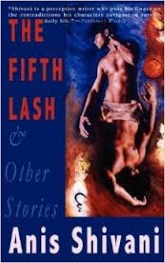The Fifth Lash and Other Stories
Anis Shivani

Paperback: 313 pages
|
In his preface, Anis Shivani claims that The Fifth Lash & Other Stories is a collection of fiction that is fundamentally the work of a young man. He quickly points the reader to the collection’s immaturities—the anger of the narrators, the stylistic experimentation from story to story, transient identities of characters, and even the youthful rawness of emotions crammed into the assemblage as a whole. Indeed, The Fifth Lash was Shivani’s first collection (later publications include Anatolia and Other Stories as well as his poetry in My Tranquil War and Other Poems), but the poignancy of these sketches deserves more than to simply stand in the shadow of his earlier published—yet later written—work. In short, The Fifth Lash & Other Stories offers simple, profound themes of Muslim identity that resonate and permeate through complex stories. To this end, Shivani’s characters constantly scramble for a cultural identity, but also for a sense of purpose. The relatively weak depiction of these characters allows the cultural complexity of daily life, laughable bureaucracy, and unexpected conflicts to carry the stories’ narrative arcs. While some of the stories venture into the nearly bizarre through byzantine twists and turns (with enough plot elements that the reader is almost reeling from the complexities), the sketches are literary reflections of the mad, hectic search for individual purpose. We see this search lead, more often than not, to a futile, nihilistic, or simply anti-climactic ending—though not quite absurdist in the existential sense, these are certainly stories without comfortable, neat resolutions. Throughout The Fifth Lash & Other Stories, the author plays out a series of tropes. We see Shivani develop the theme of justice in “The Fifth Lash” and “The Rug Seller’s Daughter.” We see the theme of women’s agency in “The Fifth Lash” and “Dowry.” We see the theme of democracy and choice—as political spaces are negotiated—in “The Abscess of the World” and “Alienation, Jihad, Burqa, Apostasy.” Indeed, one of the most interesting and unique themes that Shivani advances is the nature of the Muslim diaspora and the relationship that Islam has with the West. “In the Shade of the Wavering Palms” shows us characters like Firdaus and Tawfiq and their multi-generational Persian family in southern California. As Tawfiq is a subcontractor for the Department of Defense, both characters begin to grapple with questions of what it means to be “in America” but to retain or purposefully choose cultural identity against not just political backlash, but also the ignorance their children have of their own history and cultural heritage. However, these themes all collapse brilliantly together as illustrated in this quote from Shivani’s story “The Fifth Lash.” Here we see that justice, democracy, the politique, and women’s agency are all rays of identity refracted through the prism of culture—through being “there” and “not there” and how one best makes sense of that: Twenty years ago on these same boulevards, it was thrilling to watch the transformation of Pakistan, the women switching from saris to skirts and dresses, the lush hair sheared into Western perms. Ten years ago they went from copying Western outfits and hairstyles to introducing originality: you could see it in the way they were simultaneously modest and aggressive, innocent and knowing. Today, you don’t see women anymore. If they’re middle-class, they’re afraid to go out in public. . . . If they’re working-class they’re covered in burqa. Except for the truly rich and the truly poor, both beyond the constraints of veiled modesty, half this country has disappeared overnight. How did we get here, when ten short years ago women stood shoulder to shoulder with men at Bhutto’s rallies, shouting that we needed roti, kapra, aur makan—bread, clothing, and shelter? Reviews
|
